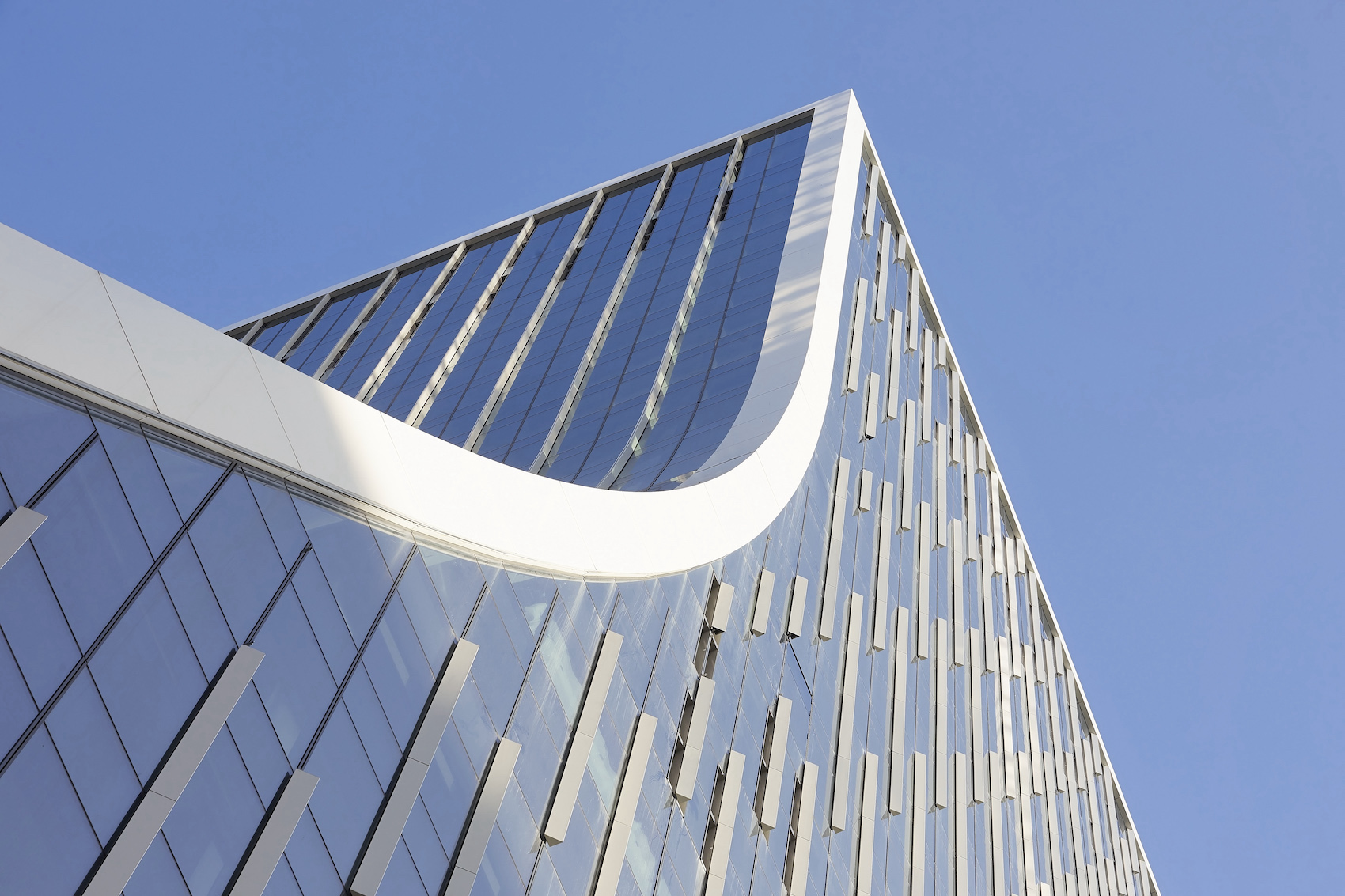Darren Brennan, Specification Director at Siderise, answers readers’ questions on passive fire protection for the building envelope.
1 Bank Street in London’s Canary Wharf employs Siderise CW-FS firestops and MI3 acoustic foam inserts (photo: Hufton + Crow).
What is passive fire protection in terms of the building envelope and why is it important?
Passive fire protection, such as cavity barriers and fire stopping, is a legal requirement for all kinds of buildings. These measures are installed within the external wall buildup and work by containing the spread of fire and smoke within the compartment of origin for a prescribed period of time. This is referred to as compartmentation and can be considered the first line of defence in a fire strategy. It not only keeps the risk of fire spreading at a more manageable level, but also protects escape routes to aid evacuation, allows the fire service to access the building safely and easily, and helps to limit asset damage.
How do passive fire protection solutions differ depending on the application?
There are several different types of cavity barrier, firestop and perimeter seal solutions on the market that have been developed and tested for different façade types, such as curtain walling or rainscreen applications. Understanding how product performance is measured and how a product should work within a given application can make it easier to choose the best product for the job, spot inconsistencies, and ensure that the correct test standards have been used to assess their performance. Undertaking CPD and product training opportunities developed by passive fire protection experts can help architects navigate these complexities. To this end, we offer training opportunities for professionals working in all kinds of sectors and contexts, from in-person and livestreamed seminars to on-demand training modules via the Siderise Academy online learning platform.
How should specifiers approach the design of passive fire protection systems?
Early engagement with manufacturers of these safety critical products is key to ensuring a robust design that is supported by the appropriate test data and that is buildable onsite. This reduces the risk of poor installation and prevents complications further down the line. We are currently experiencing a significant increase in early engagement with key stakeholders to support the remediation market. Both specifiers and the wider design teams recognise and value the importance of our support at the early design stages in assisting them with the comprehensive requirements for Gateway 2 submissions to the Building Safety Regulator. For example, the services of our UKAS accredited testing facility for several key remediation schemes have been used to support design teams from the outset with tested solutions, despite the bespoke requirements of the building.
Early engagement is equally important for specifiers working on projects in other countries. We can introduce them to our counterparts in the relevant region and work collaboratively with them to ensure they receive the most meaningful support – whether this is training or technical advice – grounded in local knowledge.
What do specifiers need to do to comply with the Building Safety Act?
At Gateway 2, construction cannot begin until the Building Safety Regulator ‘is satisfied that the design meets the functional requirements of the building regulations’. This means that designs must be prepared and submitted with an appropriate amount of detail, including clear information and test data to justify product selections or design approaches.
Again, early engagement is key. Siderise has developed application-specific digital Specification Packs, which provide quick and convenient access to crucial tools and information sources related to our products. This includes technical datasheets, third-party certifications, standard detail drawings, BIM objects, and specification information and clauses. Early feedback from specifiers has indicated that these help to save time when creating specifications, especially as the digital links mean they are always working from the most up-to-date versions of the documents.
What sort of accreditation should specifiers look for when choosing passive fire protection products and systems?
Passive fire protection products should be supplied with clear, accessible performance data, and verified with third-party accredited testing that is relevant to the intended application. Products that carry the CCPI mark can provide further reassurance that the information is not only clear, accurate, up-to-date, accessible and unambiguous, but that the people supplying any product-related information or advice are appropriately competent to do so.
How can specifiers ensure that passive fire protection systems are correctly installed on site?
Look beyond the products at what kind of support the manufacturer can offer throughout the construction process. For example, Siderise Site Services provides free classroom learning and practical onsite training, which can be followed up by benchmark installations to explain correct procedures and the expected standards of workmanship. This can be verified by our inspection service, and carried out either in-person or via our Siderise Inspection App. As well as providing reassurance that these life safety-critical products have been installed in line with what has been specified, inspection records can also help to maintain the golden thread.
For further information, please visit the Siderise website.
Source: Architecture Today

